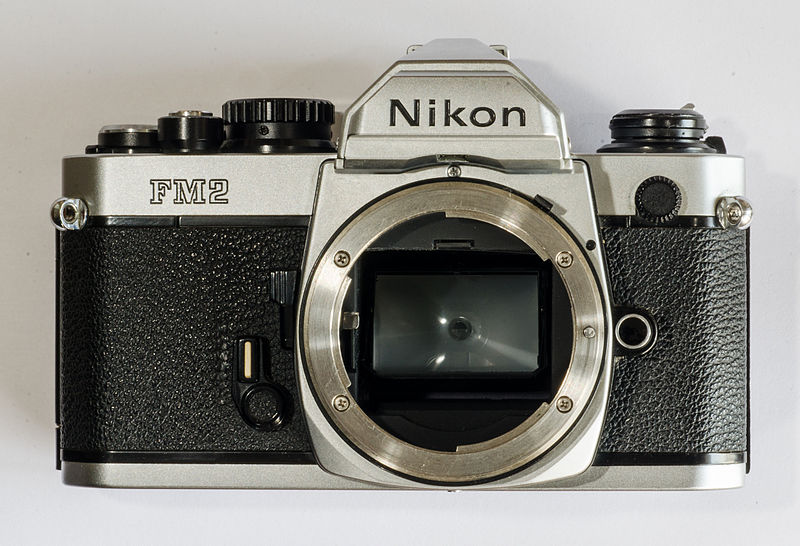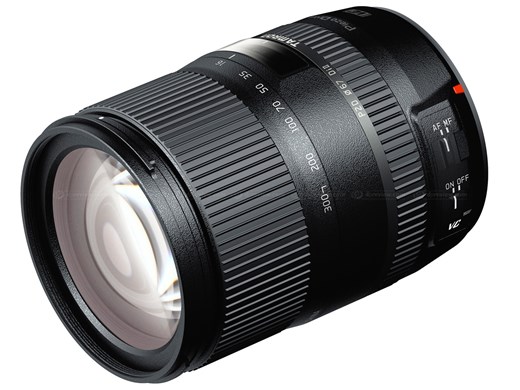Many have fantasied of putting a digital sensor back in the place of films in their film SLRs. Some company has at the start of the digital camera revolution announced that they were going to built a digital sensor back for a Nikon SLR. It fizzled out after the announcement. The Leica DMR was the first to build a digital back but it did not take off due to the high pricing. Now someone has come up with a similar concept call Digipod which is essentially a digital back for film cameras. Here is what it is all about.
Short Summary
As a 58 year old ex-professional photographer I have for years been looking at a number of old analogue or as I call them wet film (refers to the developing process) SLR camera bodies that I used as a young professional, all of which are precision mechanical instruments, they all hold great memories and have taken some great images.
Some are completely mechanical others have batteries to power meters, there are Nikons, Canons and a couple of Leicas’, in my eyes they are all works of art and I have taken some wonderful images with them, but they have not taken pictures for a number of years and that’s a sin.
So for the last five years been looking for a way to make a digital film pod to replace the 35mm film for these cameras, there has been a number of prototypes and a very steep learning curve for me.
I wanted the Digipod to be as versatile as possible in the space available, so there is no hard memory, everything is saved to a micro sd card, plus it has a mini USB for direct connection to a computer and a built in battery.
Others have tried, notably “Silicon” back in 2000, but they failed due to technical problems. Having researched their attempt, I came to the conclusion that it was an over complicated project which made it too expensive and the hardware was just too big, given that the smallest memory cards in 1999 were the thin smart media cards and a maximum of 128mb memory (about 24, pictures at that time) so it’s no surprise that they fell by the wayside!
Well the world has moved on since then and I have done a great deal of work on the problem. I am glad to say that with the advances in technology I have developed a digital film pod that will fit most, if not all 35mm SLR cameras and some of the mechanical non-SLR viewfinder 35mm cameras (like Leica, Olympus trip and Rolli, ones I have to hand and have tested).
I have known that the hardware required to capture images has reduced in size, you only have to look at some of the “spy” cameras available now on the internet.
The issue as I saw it was getting the hardware to fit the space available in a package that would be affordable, and have it interact with 35mm wet film cameras simply.
It has been a “back to school” experience for me, with calculations of sensor size and focal plane, which is just one of the issues I came up against, combined with the difference in positioning of shutters in SLR cameras which I have overcome in the design of the Digipod case.
The sensor in the Digipod will be a Cmos, it has a predicted 24 to 3200 ASA which can be set manually before the Digipod is put in the camera, there is a battery save mode you can set and the Digipod can be reactivated without removing it from the camera in one simply action if it has gone to battery save mode.
To save you having to explore the web for an explanation of sensor size visit Ken Rockwells site, Ken has explained it all here http://www.kenrockwell.com/tech/crop-factor.htm (and I would like to thank Ken for giving me the permissions for the link)
It does hark back to another era of photography for many in one sense, it doesn’t have a view screen so like those photographers of old you will have to wait a little to see the results, but at least you don’t have to develop them!
I have followed many projects on crowd funding sites, many of them struggle to deliver on time or at all. I know how frustrating this is for the backers, so I made a decision to launch only after I had worked through the challenges most likely to cause delays.
For me, it meant securing and building relationships with suppliers, finalizing the product design and securing proof that contactors had good delivery history.
Should Digipod really touch a photographic nerve, it could introduce some delays in delivery for the later backers and that’s only due to production limitations of the manufacturer, but we would be keeping everyone updated and the up side would be bigger sensors all round!
The factory has assured us that they are equipped to handle large order sizes into the 2,000+a month range quickly and efficiently.
These are the images taken in the video, the camera is the Minolta 35mmSLR with a AF zoom 35-70mm 1:3.5(22)-45. As you saw each image is focused on different parts of the image.
Because the sensor used in the prototype is 1/2.5 it only captures part of the image in the Minolta’s viewfinder, in the production models the sensor will capture more than 20 times the area shown here.




What We Need & What You Get
DigiPod is going nowhere unless we get 1000 backers, thats the trigger point. From there its all systems go, so if you do want DigiPod to go to production once you have backed Digipod make sure you tell all of your friends about it.
The DigiPod for your old SLR and the size of sensor it has is reliant on how many people commit to having one so the more that know about the DigiPod the better DigiPod gets.
We have added some limited edition colours for the first 250 backers and a second round of not so limited for the next 750 backers.
Now for the technical bit, the sensor we have budgeted for in the costs at the trigger of 1000 sponsors is the 2/3, that gives an 8.8 x 6.6 millimetre image capture area, we will be supplying a mirror and view finder mask within the packages to match the sensor in the DigiPod.
But as we all know, order quantity dictates cost of raw materails, so we have some added some stretch goals, which if we achieve will see all backers being upgraded to a larger sensor than the one we budgeted for at our minimum backer activation of 1000 units.
- 2000 backers will allow us to upgrade the Cmos sensor to a 1” that’s 12.8 to 9.6 millimetre.
- 5000 backers will see the digiPod use a 4/3rds which is 18.0 x 13.5 millimetre.
The DigiPod will be delivered with instructions and links to video tutorials to assist those that may feel they need assistance to set up their old cameras.
It will also have an out of camera cover to protect the sensor when not in use or when charging the pod for use.
The Impact
I look at old roll film cameras as car buffs look at a classic car. They are part of the history of photography and in the case of the cameras there are still things you can do with an old roll film camera that can’t be offered by the new digital cameras.
When we run out of petrol you can bet the car buffs will find a way to fuel those cars, well I am just offering photographers a way to use their old 35mm roll film SLR’s.
Other Ways You Can Help
DigiPod may not be for you, but please tell others that you know with an interest in photography about DigiPod.
If you contribute to photographic sites please post a link to this page, Indiegogo give you all the tools to do that
Claims and Disclaimer: DigiPod, claim a trademark for purposes of digital photograhic devices on the name “DigiPod” and the phrase “Digital film pod”, and claim a copyright © on this material, 2013, all rights reserved..
Source: indiegogo




